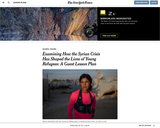
Students will examine the effect of the Syrian crisis on the lives of young people from that country, especially those who are refugees.
- Subject:
- Social Studies
- Material Type:
- Lesson Plan
- Provider:
- New York Times
- Date Added:
- 05/23/2017

Students will examine the effect of the Syrian crisis on the lives of young people from that country, especially those who are refugees.

In this lesson, students will view the short documentary about current North Carolina resident Peter Stein, a Holocaust survivor who was born in 1936 in Prague, Czechoslovakia to a Jewish father and a Catholic mother, just two years before Nazi occupation. His father was forced into slave labor and later deported to Terezin (Theresienstadt) - a work and death camp - and managed to survive, but his family of eight were all killed. Through the platform of Peter’s moving story, students will explore the realities of life in Terezin, while comparing this to the 1944 propaganda campaign Hitler launched with Terezin at its core. Based on Peter’s insights and words of wisdom, students will then explore what they believe the most important lessons of the Holocaust are by creating their own mural.
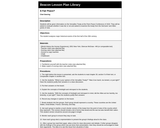
n this lesson, students will be given information on the Versailles Treaty at the Paris Peace Conference of 1919. They will be asked to evaluate whether it was fair or not and asked to examine the treaty from the Germans' and Allies' points of view.
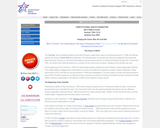
In this lesson, students learn about NATO - the reasons why it was developed and the reasons why it is still needed. A set of discussion questions is provided. In an associated activity, students discuss and debate whether certain countries should be allowed to join NATO.

The objective of this lesson is to understand the constellation of events - both macro and local - that enabled the sudden and peaceful reunification of the two post-World War II German states in 1989-90, to examine the symbolic significance of the fall of the Berlin Wall and German reunification for Germans as well as for Europeans, to focus on the immediate hopes and also fears felt by the diverse populations during 1989-90, and to explore the short- and long-term implications of the division of German and the reunification of two states with diverse political and economic systems.

In this lesson, students review historical political events that occurred in Germany after WWI and how the failure of the Weimar Republic led to the rise in power of Adolf Hitler. A set of discussion questions is provided. In an associated activity, students will further consider the causes and effects of the failure of democracy in the Weimar Republic.
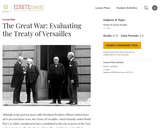
Was the Treaty of Versailles, which formally concluded World War I, a legitimate attempt by the victorious powers to prevent further conflict, or did it place an unfair burden on Germany? This lesson helps students respond to the question in an informed manner. Activities involve primary sources, maps, and other supporting documents related to the peace process and its reception by the German public and German politicians.

In this lesson, students will explore controversial symbols, the historical significance behind these symbols, and the harmful effects of such when used today. Students will further explore everyday activities that are important to them and gain a comparative understanding of how Jews were restricted from these same activities based on anti-Semitic laws and regulations passed by the Nazi party. Students will examine the role of anti-Semitic propaganda in schools, as well as Hitler's use of propaganda as a means of setting the stage for mass genocide. This lesson will assist students in understanding the roots and ramifications of prejudice, racism, anti-Semitism, and stereotyping during the Holocaust.

This presentation is intended for use with the lesson plan "Hate, Anti-Semitism, and Propaganda in the Holocaust." In this lesson, students will explore controversial symbols, the historical significance behind these symbols, and the harmful effects of such when used today. Students will further explore everyday activities that are important to them and gain a comparative understanding of how Jews were restricted from these same activities based on anti-Semitic laws and regulations passed by the Nazi party. Students will examine the role of anti-Semitic propaganda in schools, as well as Hitler's use of propaganda as a means of setting the stage for mass genocide. This lesson will assist students in understanding the roots and ramifications of prejudice, racism, anti-Semitism, and stereotyping during the Holocaust.

Students reflect on the Holocaust from the point of view of those who actively resisted Nazi persecution.
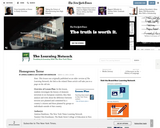
Students investigate the history of domestic terrorism in six European countries; they then analyze and write about the difference between terrorist acts planned and committed by a country"™s citizens and those planned by groups or individuals outside of that country. The web site for the artile is http://www.nytimes.com/2004/03/14/weekinreview/the-world-target-europe-knows-fear-but-this-time-it-s-different.html

Students will examine specific events, leaders, and government structures that would impact the ultimate choice of government Germany settled on in their Constitution. Students will complete research questions about the sources and write an explanatory essay laying out why the German government ultimately established the structure of government they have today.

The aim of this lesson is to introduce the role and contribution of the Indian forces on the Western Front. Students should recognise that the Indian forces made their contribution despite on-going prejudice and racism from British society.
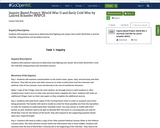
Inquiry DescriptionStudents will examine resources to determine how fighting over power led to both World War II and the Cold War using primary and secondary sources.

This lesson serves as an introduction to the European Union and many of the countries that are part of the European Union. Students will independently learn about the history, institutions, and policies of the European Union through a webquest. As a culminating activity, students will research an EU member country to create a travel brochure and jingle that will educate their classmates about the various EU member countries.

In this lesson, students will get an overview of the Iraq War through a montage from the PBS NewsHour and discuss views and knowledge of the Iraq War.

In this lesson, students learn about Kristallnacht as an occurrence of genocide.
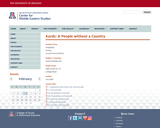
This lesson begins with a lecture/presentation about the Kurds and their history/geography. Students are then asked to divide into pairs, randomly choose a place and time in modern Kurdish history in which their character will live, conduct research on the historical situation, fill out the research question guide and the options pros and cons guide, and write a detailed letter explaining what actions their fictional character plans to take and why.

In this lesson, students will use political cartoons to become familiar with the purpose of, and controversy surrounding the League of Nations.

In this activity, students locate three current news articles about events in the Middle East. Students will consider the changes that took place in the Middle East as a result of WWI and how this impacts these countries currently.